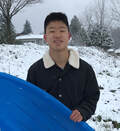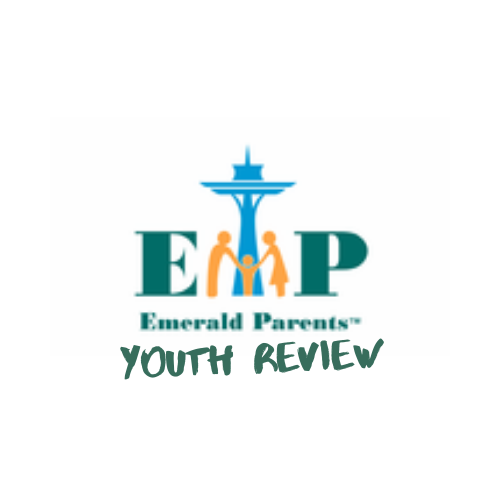|
(Content advisory: description of historical, racial violence.) This is a day in February, one of our early days of sunshine – early enough so that we don’t take the light for granted. My mom and I are stepping into a Trader Joe’s near Greenlake. I move steadily towards a stand of free samples, while Mom stops and shifts the reusable bags in her arms – from Ranch 99 or H-Mart. By now news has reached us of the virus that is devastating Wuhan, and we’ve heard of the related xenophobic incidents in the States as well.  Figure 2. People participate in a rally in support of Chinese people and people around the world in fighting the novel coronavirus, COVID-19, in Chinatown, San Francisco on Feb. 29. Yichuan Cao—Sipa USA. Caption and photo from TIME Magazine. Figure 2. People participate in a rally in support of Chinese people and people around the world in fighting the novel coronavirus, COVID-19, in Chinatown, San Francisco on Feb. 29. Yichuan Cao—Sipa USA. Caption and photo from TIME Magazine. Then my mom asks, not to me but to herself, whether it was really okay to bring a bag marked like this, into the store. That is to say, a bag with Chinese characters on it. I laugh and say yes of course it is okay. We understand that we ourselves, are “marked like this”, that we cannot hide our very presence in the public space. But it shocks me – the speed at which we acquiesce towards being made a target. It’s a universal truth of growing up Asian-American – even played for laughs on sitcoms or national television – to expect overprotection from our parents. This is a reality that I’ve known, if not for myself, then for others. But it’s also true that if later on we’ll say, and you’ll expect us to say, “you had the best in mind”, if later on we’ll say “thank you for protecting me”, there is still, for now, the image of fear, and of inhibition. And if deep in my heart I know that my parents are braver and stronger people than I myself, sometimes there still runs the image of fear; the idea that it is the instinct of an immigrant to hide and shield and shrink away. To be fair, America has given its immigrants plenty reason to be afraid. As immigrants, we’ve come in waves, and have been met with resistance each time. In the fall of 1885, following a wave of Chinese immigration, a group of white and Native American hop-pickers shot into the tents of Chinese hop-pickers in Issaquah, killing three. In southern King County, later that month, almost all of the Chinese miners would be run out of town. And on a day in February 1886, in our Emerald City itself – repeated efforts to drive Chinese workers out of town culminated in a violent mob attack on 1st Ave. Two thousand Seattle residents, mostly white, rushed a scattered line of the Seattle Home Guard and the Seattle Rifles, hoping to lynch the cowering group of Chinese behind them. As guardsmen fired into the crowd, killing one man and injuring five others, the Chinese laborers threw their packs onto the ground and lay face down in the street. The Chinese would eventually leave, mostly unharmed, by steamship for San Francisco. But their houses were burned and their neighborhood demolished, and the memory of that day made to live raw in their minds for the rest of their lives, saying: you do not belong. In a way, all around our nation and all throughout the next century, non-Asian Americans took up that oppressive chant. In 1900, during a period of bubonic plague, Chinese living in San Francisco were quarantined and forbidden from use of public hospitals. In June of that year, a Dr. George F. Shrady, writing for the San Francisco Call, reported that the “heathen Chinese” wallowed in “appalling disgustfulness”. The title? “Danger of Plague has Passed and Vigilance Will Insure Complete Safety to the City”. Later that month, The Call would note that “when the Chinese become too thick in this country or in the British colonies it is the practice to thin them out with a gun, or, as we did in Wyoming, by burning them in lots of 250 at a time, like rats in a strawstack.” Legislation, too, has been used to keep us down and out. With the passing of the Chinese Exclusion Acts of 1882 and 1886, and various other acts of prohibition and restriction, bigotry and ignorance has long kept Chinese people from establishing a foothold on American land. Ironically, I’ve learned much of this history of Chinese-American settlement in the past few weeks, in school (in-person and online). And as I’ve read about this history, I’ve wondered what my parents knew of it, whether they’d lived any part of this, any legacy of exclusion or otherness. Perhaps in a way they know -- they’ve inferred it from the attitudes of those around them, ever since their first days in America – perhaps history like the 1886 riot was the secret fear that haunted my mother, then, in the Trader Joe’s, smiling even as she clutched the reusable bags close to her chest, where the characters could not be seen. And especially in these past few weeks, it’s been tempting to continue to fear: how can we trust in a government and in other people that doesn’t seem to trust us themselves? As COVID-19 has begun to sweep King County and cases of anti-Asian racism rise, I’ve realized that as one of the kids, one of those who were born here and know no other life, that I can say this: we belong. We belong and we have always had this right to belong, and we will not expect, nor will we tolerate, any statement towards the contrary. I mean to say that today is different, and if we err on the side of caution with the virus we cannot do so with bigotry. Through the sacrifice and effort of dedicated individuals; through the hard work of activism and the bravery of parents like my own; we have survived and thrived as a community. But a return to normal or a return to justice is not a given, now more than ever, and the responsibility lies on all of us to have courage in our daily lives. To my parents, I’d like to say that you were right, in a way, and thank you, for preparing, thank you for worrying about the virus. But even as we isolate ourselves, physically, we must know that it is not the time to fade away, and it is not the time to be indifferent. Justice, towards ourselves, from ourselves and others, should be assumed if not taken for granted.
0 Comments
Leave a Reply. |
Archives
June 2024
Categories
All
|
|
follow us on WeChat
|
Copyright © 2024 Emerald Parents Association. All rights reserved.
Contact us: [email protected]
|



 RSS Feed
RSS Feed
